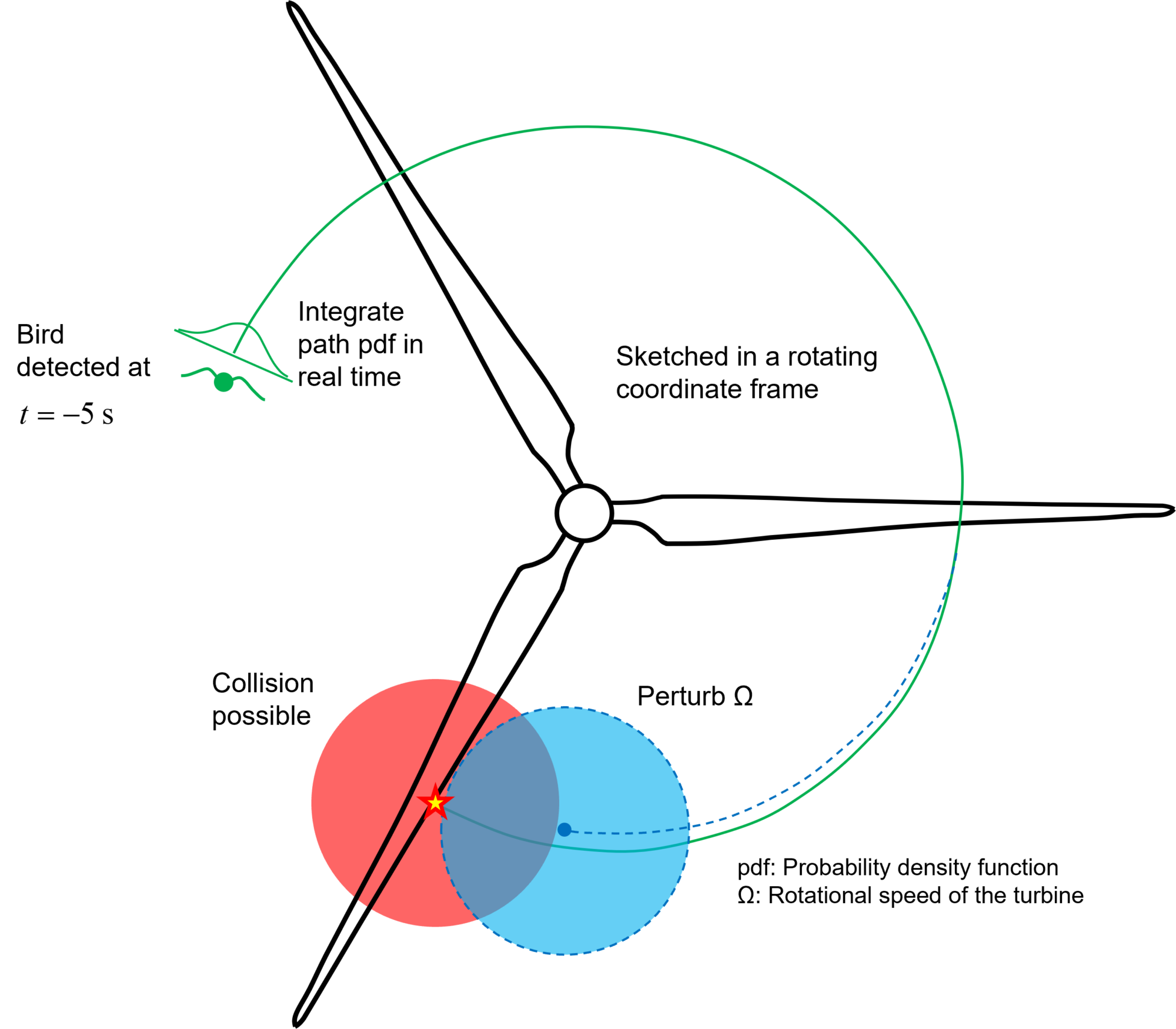Sound signals, lights, painting the rotor blades, and rapid shutdowns have all been tried in an attempt to reduce bird mortality.
But researchers Paula B. Garcia Rosa and John Olav Tande at SINTEF are currently working on a new concept – involving turbines that adapt to bird behaviour, rather than the other way around.
What happens when a bird approaches an ‘adaptable’ wind turbine?
“As the bird approaches, it is identified using cameras and bird radar systems mounted on the turbine”, says Garcia Rosa. “This identification has to take place at least five seconds, or at a distance of at least 100 to 200 metres, before collision with the rotor blades”, she explains.

Paula B. Garcia Rosa is a Research Scientist at SINTEF, working in the field of eco-friendly energy.
“Software is used to calculate the most probable trajectory of the bird. If there is a danger of collision, it sends control signals that trigger a small adjustment in the blade rotation velocity. This is achieved by adjusting the generator moment and blade twist”, explains Garcia Rosa.
To date, the researchers have only succeeded in performing numerical simulations of their method, although their results indicate that four out of five collisions can be avoided.
Of course, it is not possible to do anything about potential collisions with the rotor head, or about situations in which a bird approaches a turbine from the side or along the plane through which the blades are cutting through the air.
The technology has been given the name SKARV and has already been patented.

Researchers believe that the new technology can reduce collisions by up to 80 percent. Illustration courtesy of SINTEF.
Predicting a bird’s flight trajectory
“It’s difficult to predict a bird’s flight trajectory, and the new system will not resolve this problem entirely”, says Garcia Rosa. “For example, if a young, inexperienced bird approaches a turbine displaying irregular flight behaviour, it will not be possible to predict exactly where it will be a few seconds later. Prediction is also more difficult if several birds approach at the same time”, she says.
The researchers offer an alternative solution in the case of an approaching flock of birds. This involves emergency shutdown of the turbine.
It may take 15 to 20 seconds for a 10 MW turbine to cease rotation from its usual speed. Wind turbines are rarely installed in isolation, and the risk of collision increases when birds have to navigate through extensive wind farms.
Up to 80 per cent fewer deaths
“On the basis of our simulations, we believe that the SKARV project can help to reduce the number of fatal collisions by up to 80 percent”, says Garcia Rosa. “The next step is to further develop existing strategies for controlling blade rotation speeds and to integrate these with methods for identifying bird flight trajectories”, she says.
“Then we will be looking to implement a practical demonstration”, adds Garcia Rosa. “We believe that the SKARV technology could be commercially available within five years, and perhaps even earlier if we see sufficient interest from the industry”, she says.
The technology can be adapted to all wind turbines that operate with variable and controllable blade rotation speeds.

Roel May is a Senior Research Scientist at the Norwegian Institute for Nature Research (NINA).
Too little data on bird mortality
“SKARV is a promising technology, but as yet we know too little about how effective it will be in practice”, says Roel May, who is a Senior Research Scientist at the Norwegian Institute for Nature Research (NINA).
According to May, bird mortality resulting from collisions with wind turbines is regarded globally as a major problem. Seabirds and birds of prey are especially at risk.
“In Norway, detailed research has been carried out only on the island of Smøla”, says May. “Here, between six and eight white-tailed eagles are killed by wind turbines each year. Willow grouse also incur major losses. The problem is greatest for species that are few in number and which produce few young each year.
May is keen to emphasise the need for a hierarchy of measures for the prevention of bird deaths.

A white-tailed eagle killed after collision with a wind turbine. Photo: Roel May
No wind farms in sensitive areas
The most important action would be to install wind farms only in locations where it is likely they will do the least harm. As well as causing bird deaths due to collisions, wind farms also contribute to habitat loss.
Reduce bird losses
The next step is to minimise bird losses at existing wind farm locations. On Smøla, NINA has painted rotor blades black and has subsequently recorded a significant reduction in eagle mortality. The SKARV technology also aims to reduce bird losses.
Compensatory measures
After having reduced these negative impacts, compensatory measures, such as habitat restoration at other locations, should be considered.
- Read more about the technology here: SKARV – Bird collision avoidance system – FME NorthWind (northwindresearch.no)


